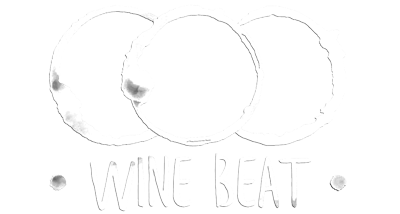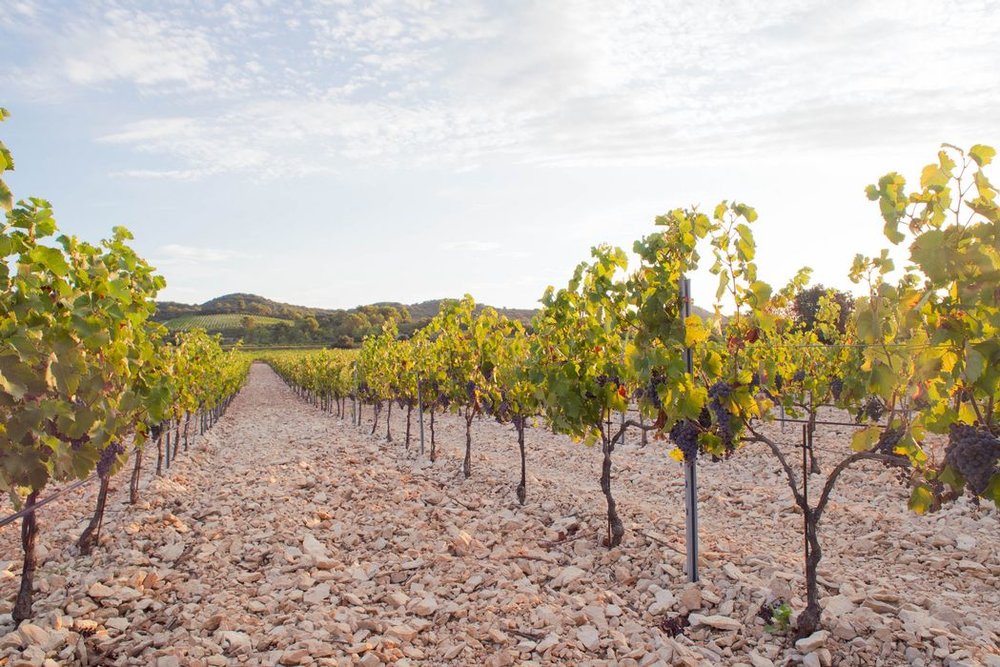
Resting in the embrace of a great arc in the Rhône river just north of Avignon, lies the singular wine region of Tavel. In this appellation only Rosé wine can bear the AOC name of Tavel. Long tradition dictates that Tavel’s wine is a bold and pulsing Rosé with a personality all its own. In fact the locals say there are four types of wine: Red, White, Rosé and Tavel. Here the wines are a deep and resonant pink, a very rich and darkly luminous version of Rosé. But it is not the extraction of colour that the winemakers of Tavel seek – rather it is flavour and bouquet that the winemaker is trying to draw out. So the colour of each Tavel wine will ultimately be as dark or light as may be necessary to achieve the winemakers’s goals in terms of palate and aroma.
Tavel wine has a very deep history going back to Roman times. Tavel really came into its own with the move of the Papacy to Avignon in the 1300’s in the same way that its neighbour Châteauneuf-du-Pape did. The Popes of Avignon and their extended clergy and minor nobility demanded a steady supply of high quality wine and they promoted the growing of vineyards, the making of wine and the improvement of winemaking techniques in order to maintain this Papal necessity. The Popes did quite a good job of promoting the wine industry. Even after the move of the Papal seat back to Rome the wines of Tavel had established such prestige that they were imported to Italy in large quantities. All of this vineyard and winemaking support benefited the Tavel (and the Rhone valley generally) winemaking tradition immensely. It provided for some stability among winemakers during the tempestuous and dark Middle Ages when winemaking expertise might otherwise have been lost. And it wasn’t just the Catholic monks and the Popes of Avignon that carried the tradition forward – Ernest Hemingway was a big Tavel drinker and you wouldn’t want to argue with him!
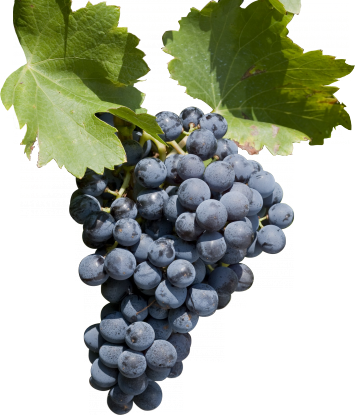
Why Tavel For Wine
Aside from the unique aspect that Tavel is the only appellation in the world based solely on Rosé wine, there is the undeniably unique character and quality of the wines that make this region so fascinating. Neighbouring Provence may be revelling in its status as the darling of the wine world with its bright, fragrant and vibrantly airy Rosé wines, but Tavel is searching to produce something much more soulful. The quality of the wines is based on both the commitment of the winemakers to expressing the special character of Tavel but also the soils that define the region. Tavel is known for having 3 really cool and distinct types of soils: (1) The very particular large, smooth and rounded stones of the Vallongues soils; (2) The broken remarkably white limestone scree such as in the area known as Les Vestides; and (3) The sandy/stony soil of Olivet where the vines for some of the biggest names in Tavel are grown.
Where Is Tavel?
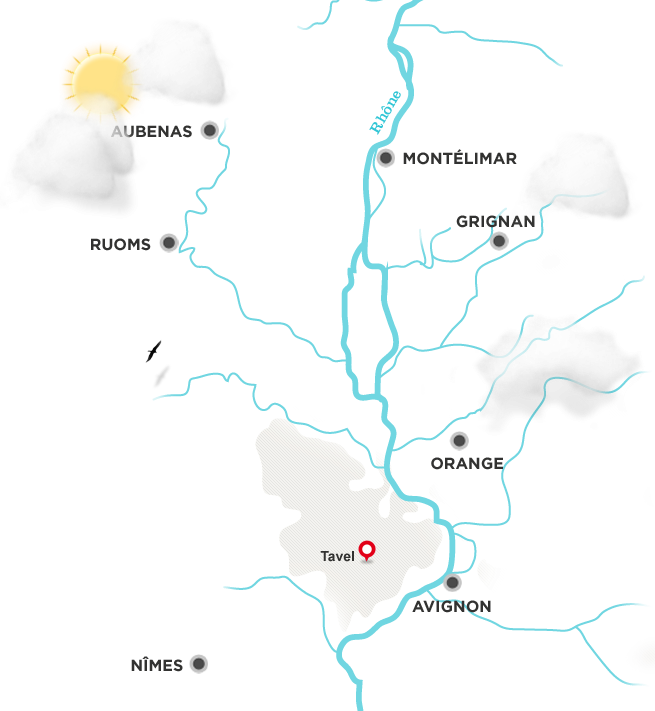 Just north of Marseilles on the Med and just south of places like Gigondas and Vacqueyras.
Just north of Marseilles on the Med and just south of places like Gigondas and Vacqueyras.
The Tavel region lies in the southern part of the Rhône valley, framed by historic Avignon and sublime Nîmes in the south as well as ancient Orange and Laudun (Julius Caesar’s stronghold) in the north. This is a country of gentle hills, small valleys, winding roads and forest. The vineyards occupy small pockets on the rolling hillsides and create a patchwork in the countryside. Tavel is so close to Chateauneuf-du-Pape that it is an obvious add-on to any visit to that storied region. Like so many of the Rhône valley’s appellations, Tavel is a famous yet quaintly undiscovered gem of geography.
Who Are The Winemakers Of Tavel?
The Tavel region is big enough that there are a large number of winemakers. But remember that in the Rhône, the distances are not that great and the winemakers have relatively small vineyard holdings. So this is a region that is just as well travelled by bike as by car. It’s easy to plan a route and there are dozens of winemakers to visit on your Rosé tour but here’s a start:
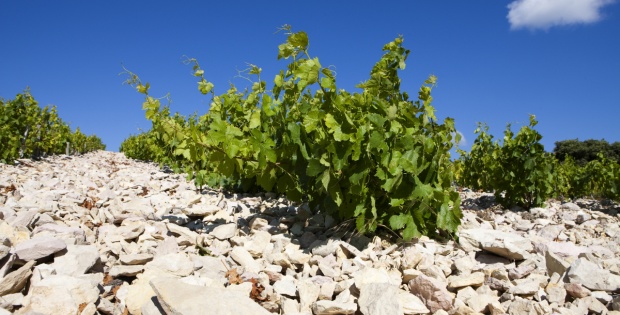 You can almost feel the heat radiated to the vines
You can almost feel the heat radiated to the vines
Visiting The Wine Roads Of Tavel
To visit Tavel you can do one of two things. You can visit Tavel … OR … you can visit Tavel, Lirac, Pont du Gard, Chateauneuf-du-Pape, Marseilles, Avignon, Nîmes, Orange, Gigondas, Provence and on and on. The wine route in Tavel can be either a small universe or it can be expanded to any size of wine universe your heart may desire. For example, Lirac (a red wine region just starting to gain great respect) is immediately adjacent to Tavel and Chateauneuf-du-Pape is just across the river. From this bicycle-friendly micro-universe of wine roads you can move outwards and enjoy not only great wine villages such as Signargues and Laudun and under-explored regions such as Ventoux and Bellegarde de Clairette but also some of the best cities in France. Whether by bike or by car the wine roads of the southern Rhône are a marvel.
Useful Links
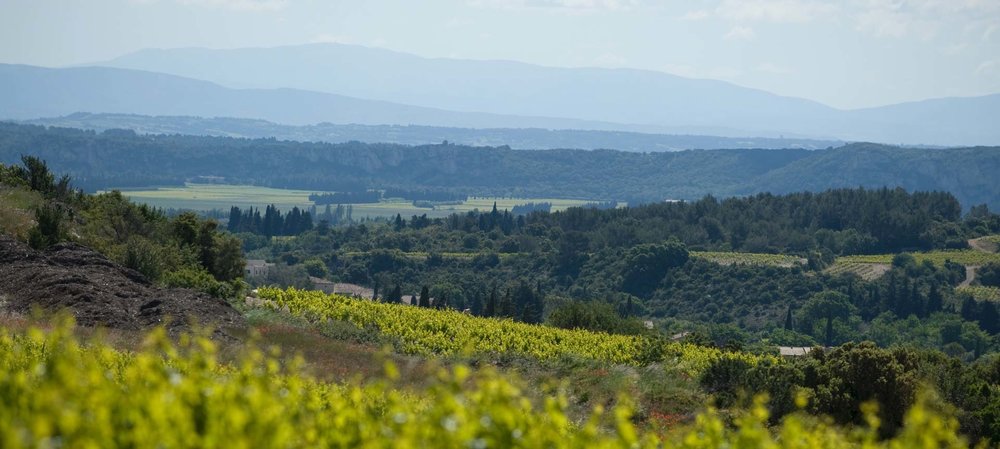 The southern Rhône – where the best of God’s handiwork meets the best of humankind’s handiwork at Domaine de la Mordorée
The southern Rhône – where the best of God’s handiwork meets the best of humankind’s handiwork at Domaine de la Mordorée
Map and photo credits: www.rhone-wines.com; Domaine Lafond; Domaine de la Mordorée
